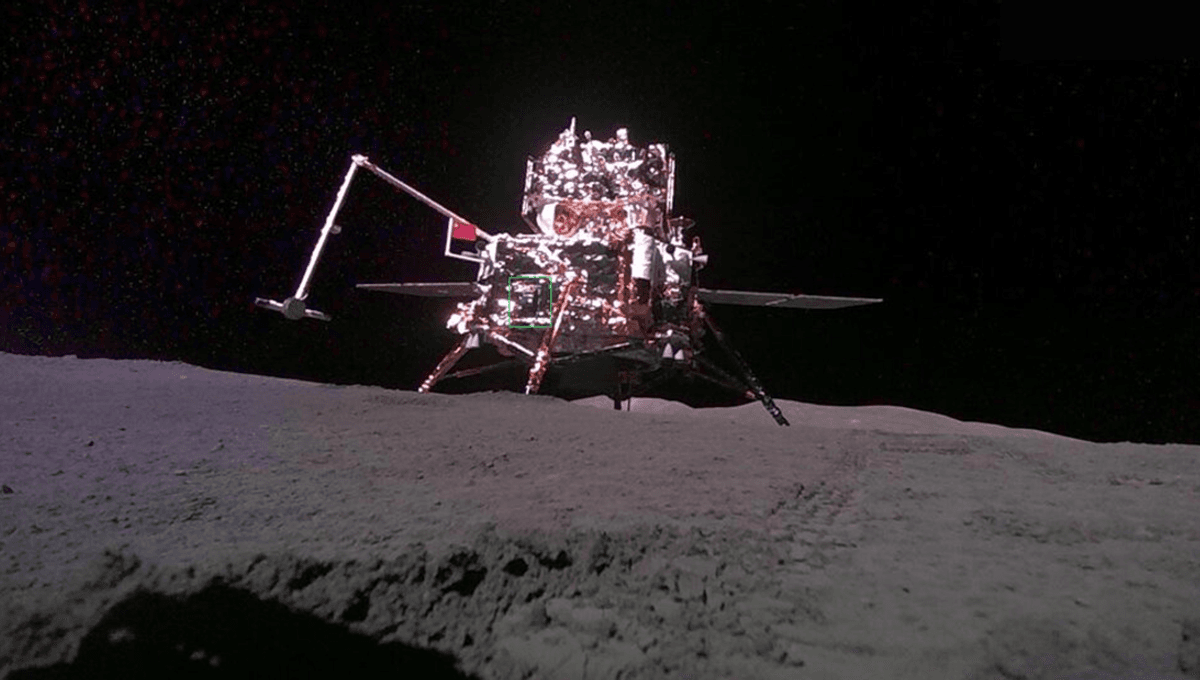
The European Space Agency (ESA) has announced the detection of negative ions on the lunar surface, days after the Chinese National Space Agency’s Chang’e-6 lander placed their detection equipment on the far side of the Moon.
Chang’e-6 landed on the Moon at 22:23 UTC on June 1, before collecting samples from the lunar surface and lifting off for its 4.5 day return journey to Earth at 23:38 UTC on June 3.
Before it took off again with its haul of a planned ~2 kilograms (4.4 pounds) taken from up to 2 meters (6.6 feet) below the lunar surface, the lander delivered other payloads to the far side of the Moon. This included the ESA’s Negative Ions at the Lunar Surface (NILS) instrument, aimed at detecting negative ions.
The instrument began collecting data 280 minutes after landing at the South Pole-Aitken Basin, before the instrument powered down due to low voltage. The instrument came online again, and was able to collect more data in-between reboots and communication blackouts.
“We were alternating between short bursts of full-power and long cooling-off periods because the instrument was heating up,” Neil Melville, ESA’s technical officer for the experiment, said in a statement. “The fact that it stayed within its thermal design limits and managed to recover under extremely hot conditions is a testament to the quality of the work done by the Swedish Institute of Space Physics.”
The Earth’s magnetic field and atmosphere largely protects us from the solar wind; particles flung our way by the Sun. But other bodies in the Solar System do not have these protective properties, and the Moon only has a very thin atmosphere containing helium, argon, neon, ammonia, methane, and carbon dioxide.
When particles from the solar wind hit the Moon’s surface, they kick up secondary particles. Positively-charged particles are relatively easy to detect (if you happen to have a lunar orbiter) but negatively charged ions are short-lived and do not make it to that altitude, making detection at the lunar surface necessary.
The team announced detections of the ions on Wednesday, and is working on papers on the findings.
“These observations on the Moon will help us better understand the surface environment and act as a pathfinder to explore negative ion populations in other airless bodies in the Solar System,” NILS principal investigator Martin Wieser added, “from planets to asteroids and other moons”.
Source Link: Negative Ions Detected On Far Side Of The Moon By Instrument Aboard Chinese Lander